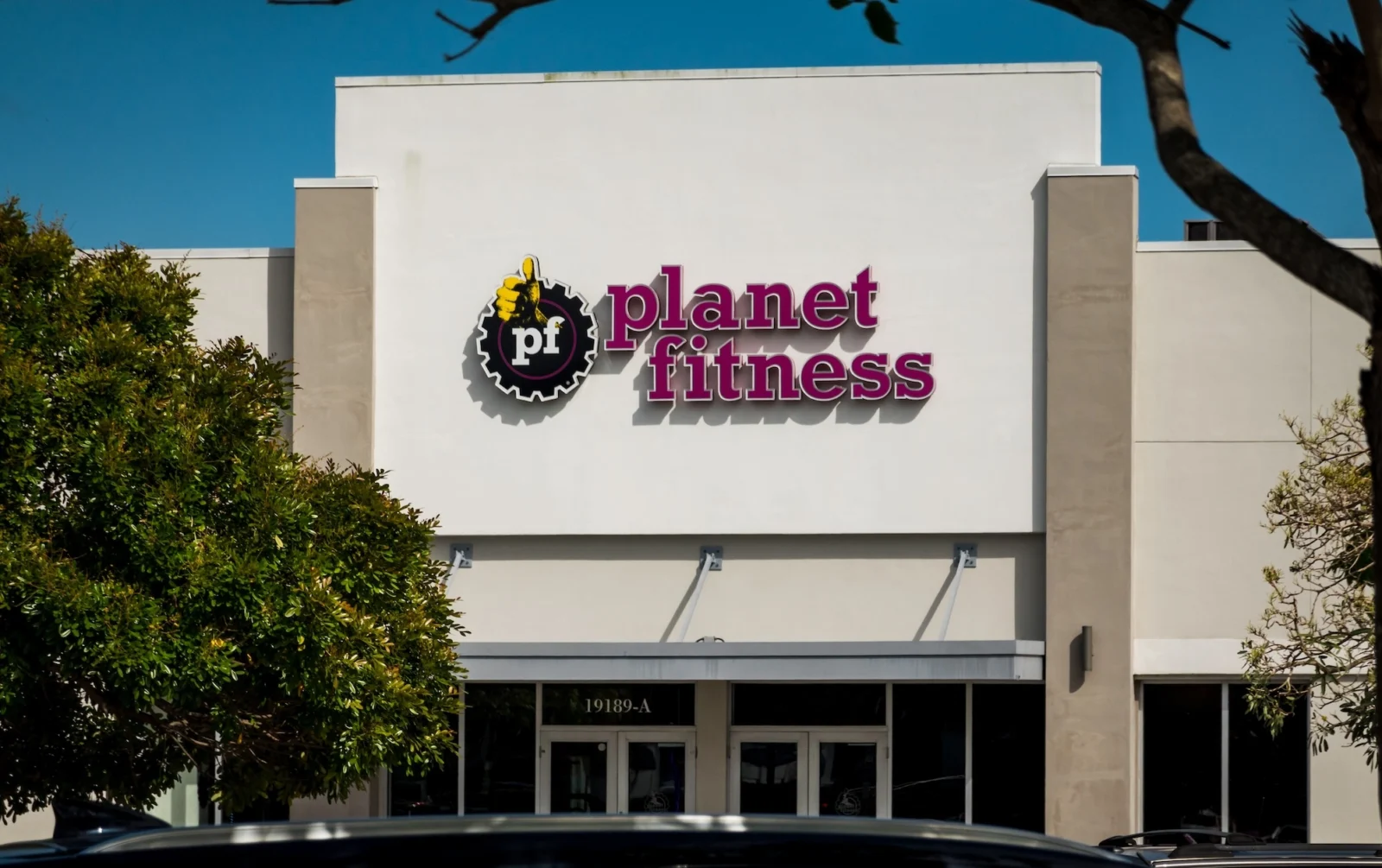Featured on Franchise Corner
View More
Planet Fitness Price Hike Likely To Benefit Gym Industry, Analysts Say

The popular gym brand raised its base membership fee for the first time in nearly 30 years, a move that figures to set a new pricing floor for the industry amid inflationary pressures
A new CEO and a membership price increase could rattle even the most confident of companies, but Planet Fitness, inching closer to 20 million members, is fortified in its position as the big box gym leader in the high-value, low-price (HVLP) space, analysts say, predicting that the price-hike move should turn out well for Planet and the gym industry as a whole.
The last 12 months have been somewhat turbulent for Planet Fitness, including the startling ousting of former CEO Chris Rondeau last September, macroeconomic pressures including inflation and rising interest rates influencing new construction timelines, and, perhaps most notably, a viral social media moment-turned-boycott that led to concerns of membership cancellations,
Planet Fitness has described 2024 as a “transition year” for the brand. The big-box gym leader made good on that promise in May, announcing that for the first time in nearly 30 years, it would increase the price of its Classic Membership, to $15 per month from $10.
The news of the Classic card price jump didn’t come as a surprise — the HVLP gym chain disclosed earlier this year that it was experimenting with different price points — but confirmation of the move saw PLNT shares rise 5%.
Planet Fitness, now with Colleen Keating as its new CEO and in a quiet period ahead of Q2 earnings, appears off to a solid start.
Athletech News spoke with several leading financial analysts to gain insight into the gym giant’s new pricing model and what it may mean for Planet Fitness, its franchisees and the fitness industry as a whole.
Use It or Lose It: The Hidden Benefit of Planet’s Price Hike
Considering that price is a significant factor in gym cancellations (one recent survey found that 41% of fitness consumers who ditched their memberships did so because of the cost), a price hike has to be carefully considered and artfully implemented, especially in the HVLP space, which prides itself on low-priced memberships.
Considering the economic environment to which consumers have become accustomed — analysts agree that a $5 increase for new Planet Fitness members won’t send fitness consumers running for the hills, but it could boost member retention.
“The consumer has experienced significant inflation in every aspect of their life, and we don’t believe a $5 increase in their monthly membership will be a surprise to them or materially weigh on their decision to join a gym or not,” Piper Sandler managing director Brian Smith said.
As BMO Capital Markets managing director Simeon Siegel points out, current Planet Fitness members may be inclined to stick with the “Judgement Free Zone” gym chain due to the price increase. Pre-existing Classic card holders are grandfathered into the $10 per month price for the duration of their membership — a “price for life” model that Planet Fitness says it will highlight.
“If executed well, a price increase could boost retention by creating a disincentive to churn and thereby lose your lower price,” Siegel said.
It’s a consideration that Piper Sandler managing director Abe Thomas shares while adding that the new $15 price point still represents a “significant value” for the consumer.
“We do not expect it to meaningfully increase member churn or significantly lower the total number of members at any given location,” Thomas said. “In fact, the price increase may improve churn at existing locations, as current members will be grandfathered into the legacy $10 pricing, and they will not want to give that up.”

Baird analyst Jon Komp assesses that Planet’s recent price increase will have a moderate impact on new member retention, but a positive overall effect on total membership dues, same-store sales and four-wall profitability.
“There are variables such as how often Planet may still use a $10 promotional price point during certain windows that may influence how much of the price increase is captured on a net basis,” Komp said.
A Premium Membership Boost?
With consumers increasingly keen on recovery modalities and amenities, Planet’s $24.99 per month premium Black Card membership – with perks such as access to massage chairs and HydroMassage beds — could become even more enticing to prospective members when compared to the Classic membership.
Notably, over 60% of Planet Fitness members join as Black Card members — a number that could increase thanks to the new basic membership pricing.
“Maximizing penetration of the full-amenity, higher-price-point Black Card membership is a top priority for every Planet Fitness franchisee, and we expect increased Black Card levels to be an added benefit of the Classic price increase,” Smith said. “By narrowing the price gap between the Classic membership and Black Card membership, it will encourage consumers to opt for the higher priced Black Card option.”
TD Cowen analyst Max Rakhlenko believes that overall, the price increase will be a big positive for Planet Fitness, also seeing the potential of the Black Card.
“The value proposition of the Black Card becomes meaningfully greater once the Classic card price goes up,” Rakhlenko said.
Franchisee Perspective
The move to raise the Black Card price should please Planet Fitness franchisees amid elevated build-out costs and increased operating expenses that have weighed on unit-level margins and return profiles for new-unit development.
Komp says the move to raise pricing ties to the decision to restore franchisee unit economics, which had been impacted most significantly by building cost inflation.
“There are some nerves about raising pricing while many consumers are feeling the pinch of persistent inflation, but we’re hopeful that risk is mitigated by Planet’s strong value proposition,” he added.

Will The Competition Follow Suit?
There’s no doubt that the HVLP gym space is heating up, with competitors like Crunch Fitness, Blink Fitness and more making membership-enhancing moves.
While most brands across the HVLP category have maintained $10 entry point pricing in order to compete with Planet Fitness, Planet’s price increase could allow them to follow suit and enhance their own unit-level margins.
Siegel succinctly sums it up: “A price increase by the industry’s dominant operator could trigger others to follow the leader.”
Rakhlenko believes there will be a mix of adjustments in the wake of Planet’s price hike.
“I think there are certainly some that are going to follow Planet,” he shared. “That said, I think the better operators don’t actually need to — they’ve actually done a really nice job of gravitating members higher up the membership spectrum, and only a minority of their members are paying that $10 price point today. So there’s not a need for them to increase the starting price, especially if they can lean in and market that – ‘Hey, we have a $10 price point, which is now below Planet’s $15.'”
As Komp points out, other gyms likely have faced pressures impacting unit economics.
“In this light, we would expect the industry over time to maintain a similar price gap vs. Planet, meaning Planet likely raised the floor for the industry,” he said.
And, as far as the fitness industry is concerned, Planet’s target demographic — Gen Z — is showing up in full force.
“The data that we’ve seen — including TD Cowen’s monthly proprietary surveys — younger members are healthier, Gen Z is joining gyms at a higher rate, and it’s certainly one of the big factors that are driving really long-term enthusiasm for the industry,” Rakhlenko said. “Younger members are seemingly healthier, and as long as these trends continue, it’s going to be a nice boost longer term.”



